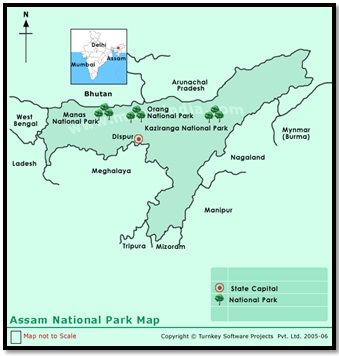GHARIAL COMEBACK IN BRAHMAPUTRA
Why in the news?
- Lone female gharial discovered in Kaziranga National Park, potentially reviving species in Brahmaputra after presumed extinction.
- Wildlife experts eye reintroduction of gharials from Lucknow to support breeding in ideal Kaziranga conditions.
source:eduhub
About Kaziranga National Park:
- Location: Golaghat and Nagaon districts, Assam
- Establishment: Declared a national park in 1974
- UNESCO Status: World Heritage Site, housing two-thirds of the world’s greater one-horned rhinoceros.
- Area: Largest undisturbed area in the Brahmaputra Valley floodplains.
- Vegetation: Eastern wet alluvial grasslands, semi-evergreen forests, tropical moist deciduous forests.
- Flora: Elephant Grasses- Dense and tall, intermixed with small swamplands.
- Fauna: One-horned rhinoceros, leopard, fishing cat, lesser cats, royal Bengal tiger, large Indian civet, small Indian civet, sambar, barking deer, hog deer, gaur, hog badger, capped langur.
Key Facts about Gharial:
Associated Article: https://universalinstitutions.com/kaziranga-national-park/
|




